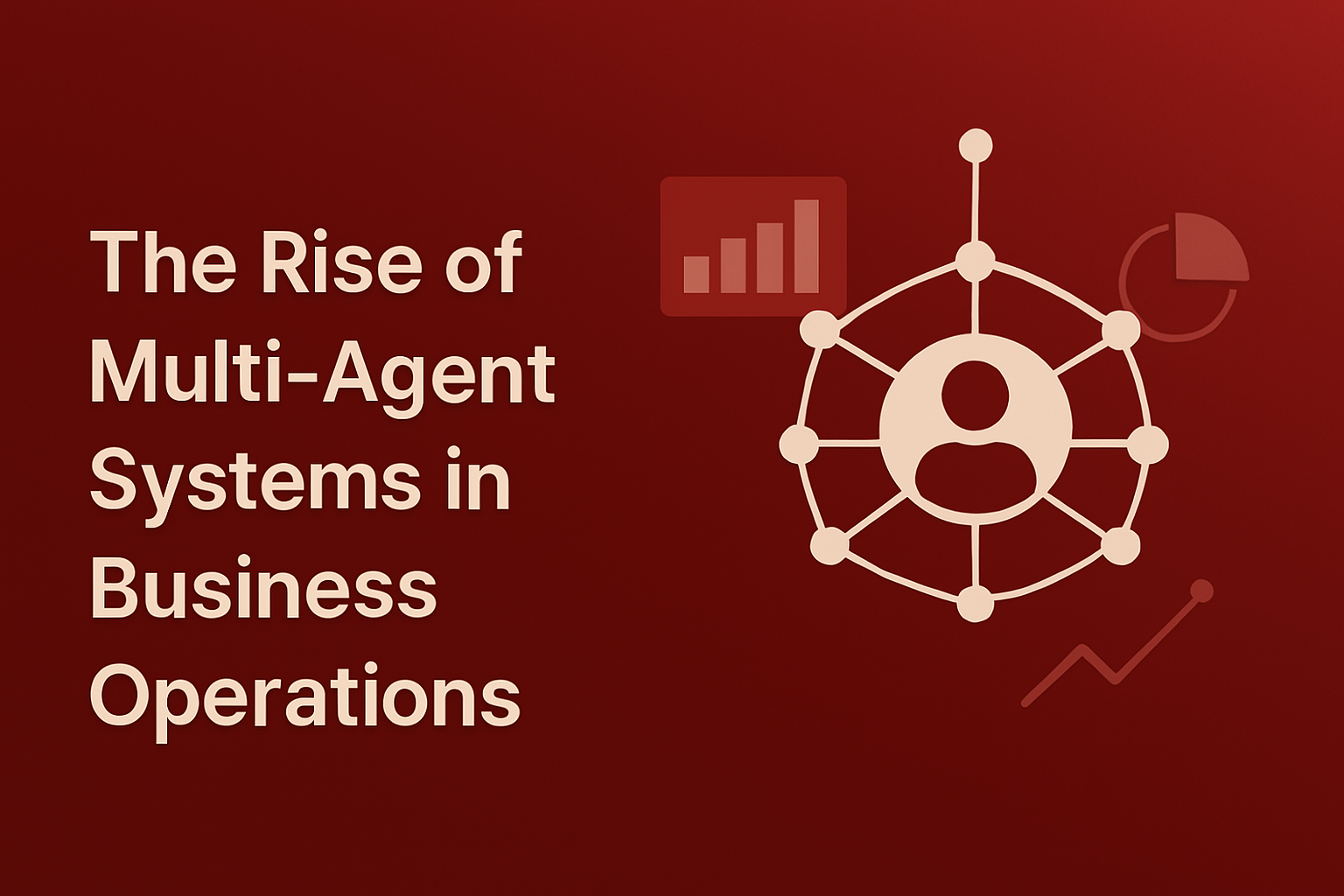The Rise of Multi-Agent Systems: A New Era in AI
Estimated reading time: 5 minutes
Key Takeaways
- Collaborative Intelligence: Multi-agent systems enable distributed problem-solving.
- They optimize complex ecosystems, such as supply chains, by coordinating specialized agents.
- Strategic planning, ethical guidelines, and employee training are essential for integration.
- Balancing human-in-the-loop with fully autonomous processes is key to success.
- Innovative trends, including collaborative AI networks, are paving the way forward.
Table of contents
Introduction
Multi-agent systems are revolutionizing the landscape of artificial intelligence by offering unprecedented capabilities for solving complex problems. These networked, intelligent agents work together to achieve goals that traditional AI approaches simply cannot match.
This article explores key concepts, business applications, and the balance between human oversight and full autonomy in AI processes, preparing organizations for an innovative, collaborative future.
Understanding Multi-Agent Systems
At their core, multi-agent systems consist of multiple autonomous entities, often called “agents” that perceive, decide, and act in their environment. These agents collaborate by sharing information and coordinating actions in real-time.
Consider a supply chain optimization scenario:
- Inventory Agent: Monitors stock levels and forecasts demand
- Logistics Agent: Plans optimal shipping routes
- Procurement Agent: Negotiates with suppliers and places orders
- Customer Service Agent: Handles inquiries and manages expectations
By working in concert, these agents optimize the entire supply chain ecosystem far beyond the capabilities of traditional centralized systems.
Strategic Business Considerations
Preparing your business for a wide-scale adoption of AI agents requires careful planning and infrastructure development. Embracing multi-agent systems means considering several critical factors:
- Scalability: Systems must support numerous agents operating simultaneously.
- Data Integration: Build robust pipelines for seamless information exchange.
- Governance and Oversight: Establish guidelines for monitoring decisions and behaviors.
- Ethical Considerations: Address biases and uphold company values.
- Employee Training: Equip staff to collaborate effectively with AI agents.
- Security: Safeguard systems from potential threats.
Autonomy in AI Processes
When implementing multi-agent systems, organizations must decide on the appropriate level of autonomy:
Human-in-the-Loop:
- Involves human oversight at critical junctures
- Provides a safety net for complex decisions
- Fosters trust and enables incremental refinement
Fully Autonomous:
- Operates independently without direct human intervention
- Enables rapid decision-making for high-volume tasks
- Maximizes efficiency while reducing the need for constant oversight
Many forward-thinking businesses opt for a hybrid approach—balancing automation with human judgment to suit specific use cases and risk factors.
Challenges and Future Outlook
As multi-agent systems evolve, several challenges must be addressed:
- Scalability: Managing the interactions among numerous agents.
- Interoperability: Ensuring seamless communication between diverse agents.
- Explainability: Interpreting collective decision-making processes.
- Ethical Considerations: Addressing job displacement and broader societal impacts.
Emerging trends that are shaping the future include:
- Federated Learning: Promoting privacy-preserving collaboration.
- Blockchain-based Security: Enhancing trust through transparent interactions.
- AI Agents with Emotional Intelligence: Improving human-AI cooperation.
These innovations offer a glimpse into the potential of collaborative AI networks that promise even more sophisticated and capable solutions.
Conclusion
Multi-agent systems represent a paradigm shift in artificial intelligence by providing transformative capabilities for tackling complex challenges across industries.
To harness their full potential, organizations should:
- Understand the core concepts and benefits of these collaborative systems.
- Prepare business infrastructure and processes for successful integration.
- Balance human oversight with the efficiency of fully autonomous operations.
Investing in proper infrastructure, establishing strong governance frameworks, and training the workforce are all critical steps. As these systems evolve, businesses that embrace this shift will be well-positioned to lead in an increasingly AI-driven world.
FAQ
Q1: What are multi-agent systems?
A1: They are networks of autonomous AI agents that collaborate to solve complex problems.
Q2: How do multi-agent systems benefit businesses?
A2: They enhance scalability, streamline decision-making, optimize processes, and foster innovation in challenging environments.
Q3: What is the difference between human-in-the-loop and fully autonomous AI processes?
A3: Human-in-the-loop systems incorporate human oversight at critical stages, while fully autonomous systems operate independently for rapid decision-making.
Q4: What challenges should organizations expect when adopting multi-agent systems?
A4: Key challenges include ensuring scalability, achieving interoperability among diverse agents, providing explainability for decisions, and addressing ethical concerns.
